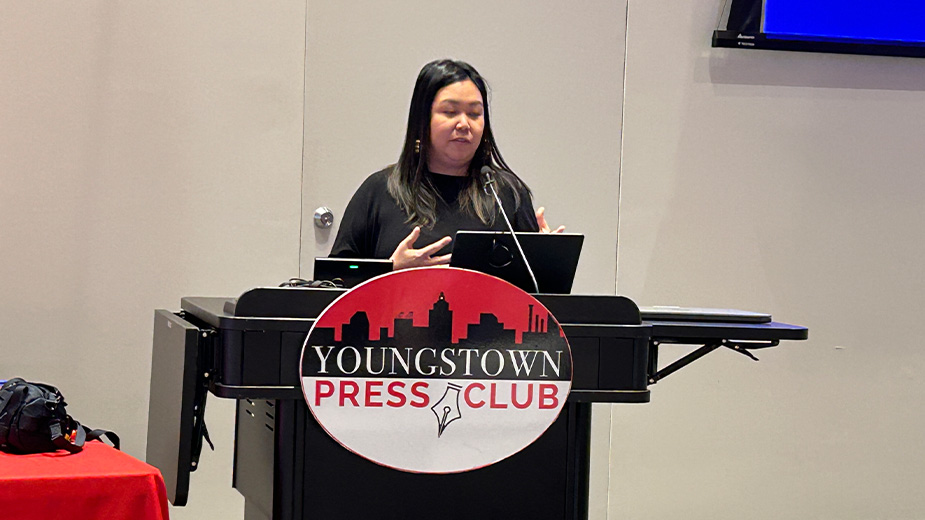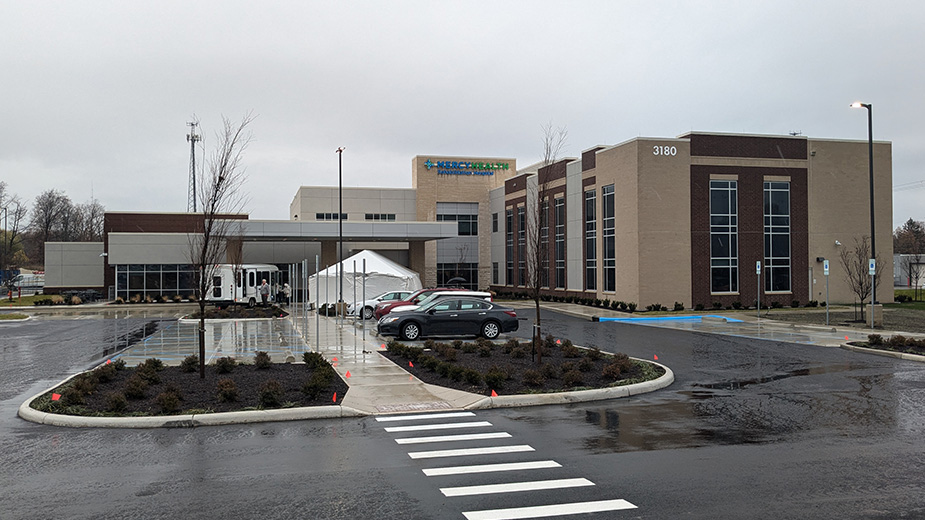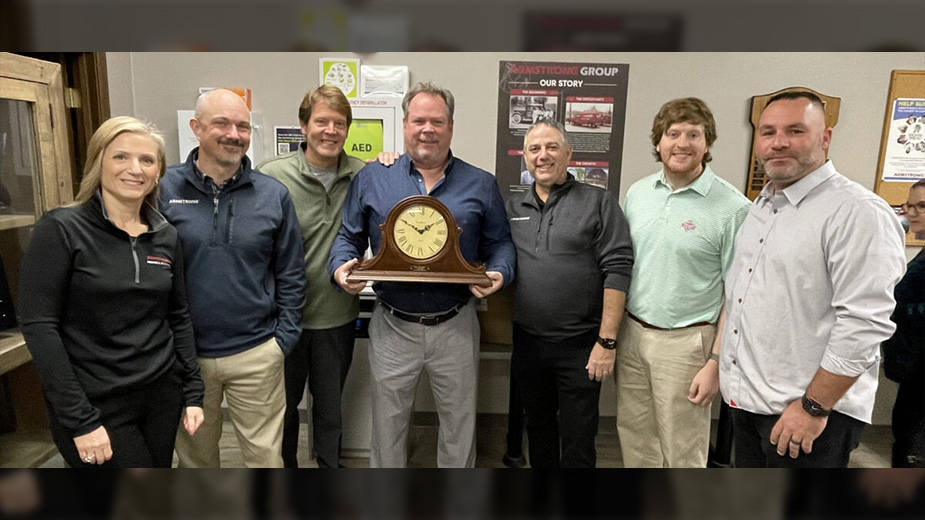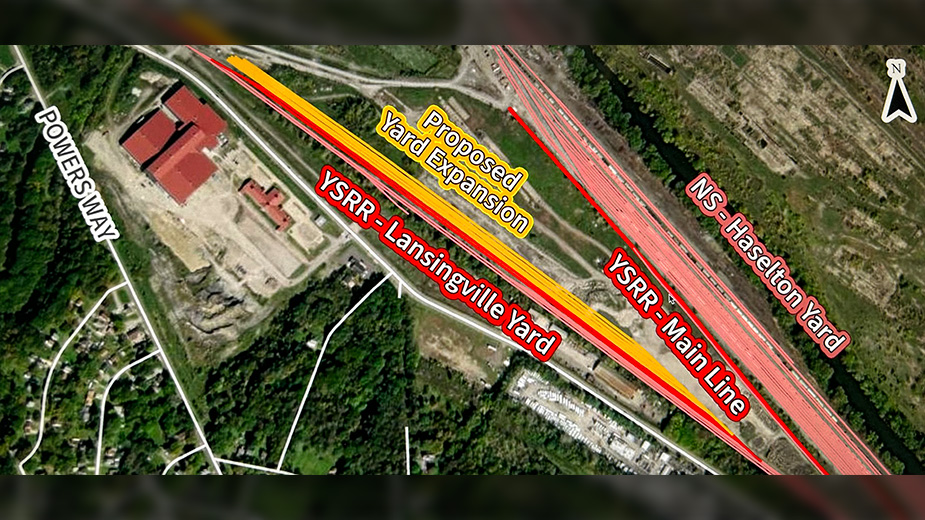Nonprofit Newsrooms Offer New Local News Model
YOUNGSTOWN, Ohio – Local newspapers have been closing across the country for the past several years, but there’s a new type of newsroom that’s cropping up to fill the void.
“Empowering Communities Through Local News” was the topic Thursday at the Youngstown Press Club’s luncheon, with speakers from the American Journalism Project and Signal. The meeting was at the main branch of the Public Library of Youngstown & Mahoning County.
The local news industry has been declining for a long time, and thousands of newspapers have shut down, leaving communities without local news, said Loretta Chao, head of startup studio and local news innovation at the American Journalism Project.
Though newspapers aren’t the only producers of local news, the American Journalism Project has found that newspapers tend to be producers of a high volume of original reporting.
“This has really had an effect on the country in terms of polarization, in terms of unchecked government spending and decisions that really need more accountability,” Chao said.
AJP was created as an organization to address that.
“A lot of that is because the revenue model for local news prior to the beginning of this nonprofit movement was very focused on ad revenue, very focused on subscriptions,” Chao said.
Those things need to continue, but because of disruption in those revenue sources, the industry needs to find a way to sustain at the same level.
“To give you an idea of why we looked into nonprofit, when you have an ad- or subscriber-based model, your incentive structures are a bit different,” Chao said.
They’re focused on capturing as much attention as possible, and there’s more competition. To get more eyeballs on their content, they go wider in their coverage.
A philanthropic model adds philanthropy to that model, allowing the business to be more diversified and more resilient, Chao explained.
Signal, which operates online as Signal Cleveland, Signal Akron and Signal Statewide, is one example of a philanthropic model. The Cleveland version launched two years ago. It’s funded by philanthropy as well as individual donors. Moving forward, the organization also wants to attract more advertisers.
Nonprofit news has been growing for more than a decade, Chao said, pointing to national examples ProPublica and the Marshall Project.
“That sort of paved the way to show that there is a way to do independent, high quality journalism with philanthropic support,” she said.
Signal uses what it calls documenters in its work. They’re citizens who attend government meetings and take notes, documenting what happens. Briefs of those notes get published, but it’s also reviewed by journalists for potential articles.
“Our documenters are covering meetings that no established journalism place has been able to cover,” said Mary Ellen Huesken, a copy editor at both Signal Cleveland and Signal Akron.
That includes Cleveland City Council committee meetings and regional transit authority meetings.
“It’s just a matter of citizens listening to what officials are doing with public money,” she said.
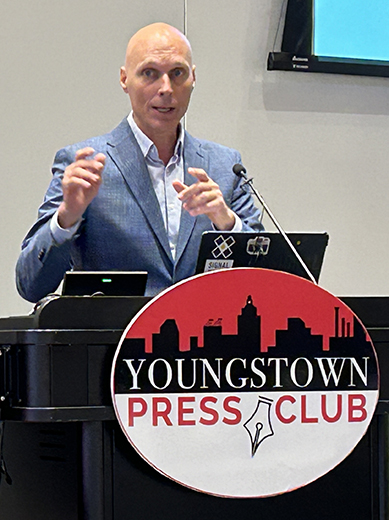
Mark Naymik, Signal Statewide Bureau Chief, said legacy media used to staff enough newsroom personnel to cover a lot of meetings, but that doesn’t happen anymore.
“The biggest developer in the region is the Cleveland MetroParks, and the major media no longer has any reporter going to their meetings,” he said.
Documenters now attend.
Naymik said Signal beat reporters do things differently. The reporter who covers K-12 education, for example, also covers youths.
“He does things like, not just tell the problems of the school levy, the budgeting,” he said. “He also tries to tell the stories of students and the youth.”
That reporter comes from a visual background and does a lot of video and photography. It’s not the kind of journalism readers get somewhere else, Naymik said.
“I get very passionate on it because it is work that – we don’t have the massive audience yet – but people are seeing it, and this is what separates us from others,” he said.
Some who attended the event questioned what the cost is of starting a nonprofit news organization in Youngstown.
“It’s about how big you want to go,” Chao said. “You could start small, but we would suggest, in terms of what AJP sees as a way to do it sustainably, is to raise at least a couple years of the budget you want to run upfront.”
When Signal Akron started, its backers raised $5 million, but Naymik called that a shoestring.
“It is very expensive,” he said, listing an office and journalists’ salaries as some expenses.
That money must grow.
Pictured at top: Loretta Chao, head of startup studio and local news innovation at the American Journalism Project, addresses members of the Youngstown Press Club on Thursday.
Copyright 2024 The Business Journal, Youngstown, Ohio.
